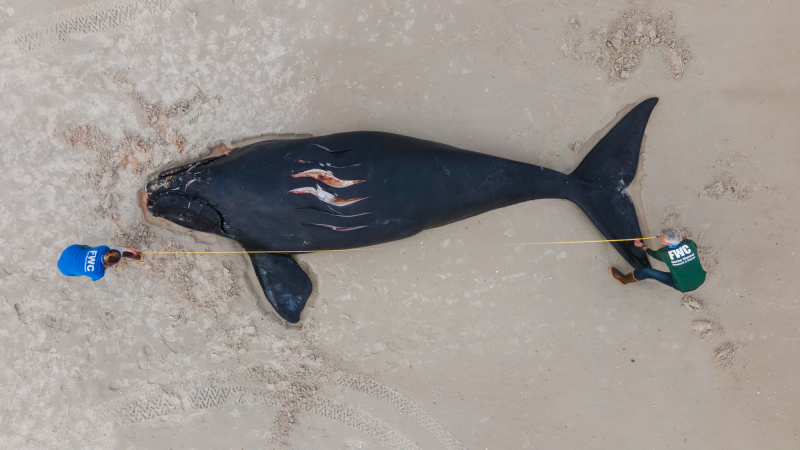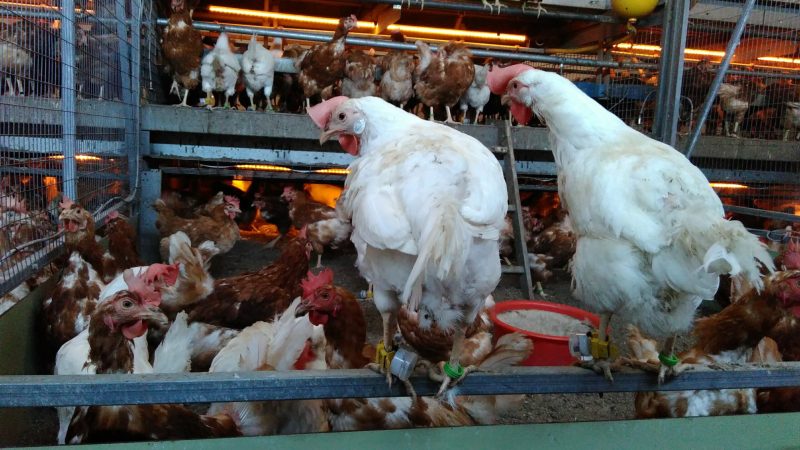

This article was originally featured on High Country News.
It’s a crisp fall evening in Grand Teton National Park. A mournful, groaning call cuts through the dusky blue light: a male elk, bugling. The sound ricochets across the grassy meadow. A minute later, another bull answers from somewhere in the shadows.
Bugles are the telltale sound of elk during mating season. Now, new research finds that male elk’s bugles sound slightly different depending on where they live. Other studies have shown that whale, bat and bird calls have regional dialects, too, but a team led by Jennifer Clarke, a behavioral ecologist at the Center for Wildlife Studies and a professor at the University of La Verne in California, is the first to identify such differences in any species of ungulate.
Hearing elk bugle in Rocky Mountain National Park decades ago inspired Clarke to investigate the sound. “My graduate students and I started delving into the library and could find nothing on elk communication, period,” she said. That surprised her: “Thousands of people go to national parks to hear them bugle, and we don’t know what we’re listening to.”
Her research, published earlier this year in the Journal of Mammalogy, dug into the unique symphony created by different elk herds. While most people can detect human dialects — a honey-thick Southern drawl versus a nasal New England accent—differences in regional elk bugles are almost imperceptible to human ears. But by using spectrograms, a visual representation of sound frequencies, researchers can see the details of each region’s signature bugles. “It’s like handwriting,” Clarke said. “You can recognize Bill’s handwriting from George’s handwriting.”
Pennsylvania’s elk herds were translocated from the West in the early 1900s, and today they have longer tonal whistles and quieter bugles than elk in Colorado. Meanwhile, bugles change frequency from low to high tones more sharply in Wyoming than they do in Pennsylvania or Colorado.
Clarke isn’t sure why the dialects vary. She initially hypothesized that calls would differ based on the way sound travels in Pennsylvania’s dense forests compared to Colorado and Wyoming’s more open landscapes, but her data didn’t support that theory. Clarke hopes to find out whether genetic variation — which is more limited in Pennsylvania’s herd — might explain differences in bugles, and whether those differences are learned by young males listening to older bulls.
“It’s not as though a song or vocal learning is ‘all environmental’ or ‘all genetic’. It’s an interplay between both.”
Clarke’s research adds a small piece to the larger puzzle of animal communication, said Daniel Blumstein, a biologist at the University of California, Los Angeles, who was not involved in the study. “It’s not as though a song or vocal learning is ‘all environmental’ or ‘all genetic,’” he said. “It’s an interplay between both.” Blumstein, a marmot communication researcher, added that the mechanisms behind these vocal variations deserve more study.
These unanswered questions are part of the larger field of bioacoustics, which blends biology and acoustics to deepen our understanding of the noises that surround us in nature. Bioacoustics can sometimes be used as a conservation tool to monitor animal behavior, and other studies are shedding light on how it affects animal evolution, disease transfer, cognition and culture.
Elk are not the only species with regional dialects. In the United States, eastern and western hermit thrushes sing different song structures, and the white-crowned sparrow’s song helps ornithologists identify where it was born. Crested gibbons and Campbell’s monkeys also have localized dialects in their songs and calls, as does the rock hyrax, a mammal that looks like a rodent but is actually related to elephants.
Similar differences exist underwater, where whale songs have unique phrases that vary by location. Sperm whales in the Caribbean have clicking patterns in their calls that differ from those of their Pacific Ocean counterparts. Orcas in Puget Sound use distinctive clicks and whistles within their own pods, while also using universal sounds to communicate with orcas in other pods.
Clarke also studies the vocalizations of ptarmigan, flying foxes and Tasmanian devils. Her next research project will shed light on how bison mothers lead their herds and communicate with their calves. “They’re the heart of the herd,” she said. “What are they talking about?”
Kylie Mohr is an editorial fellow for High Country News writing from Montana. Email her at kylie.mohr@hcn.org or submit a letter to the editor. See our letters to the editor policy.































